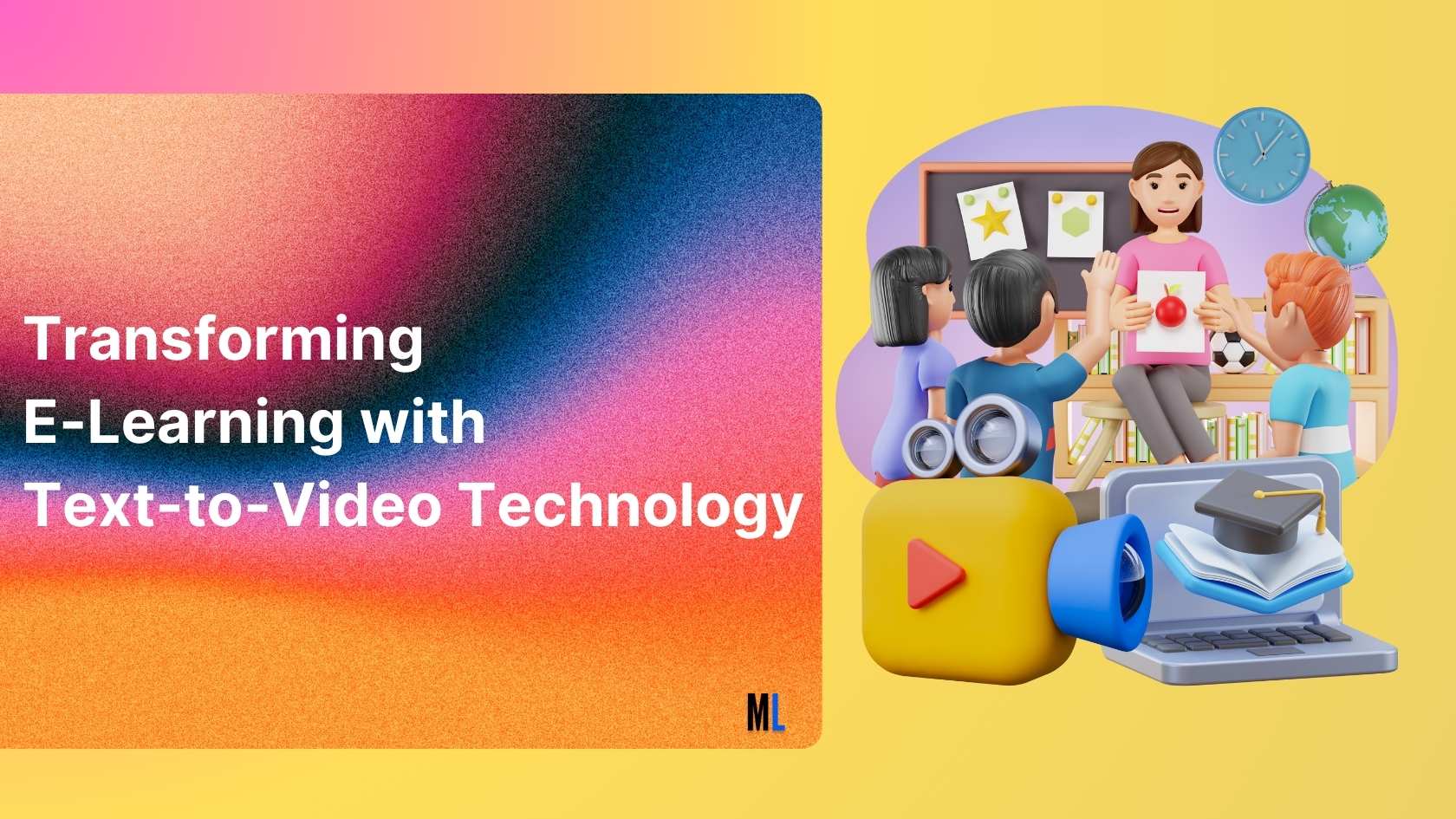Transforming E-Learning with Text-to-Video Technology
Written on . Posted in AI.
Based on a study conducted by the adaptive learning company Knewton, students who utilized their AI-powered program saw a 62% increase in test results over those who did not. Students received individualized feedback and guidance from the curriculum, which adapted the learning process to each student's specific needs and competencies.
The University of Murcia in Spain introduced an AI-powered chatbot to help students with questions about the campus and academic programs. Administrators were pleasantly surprised by the chatbot's impressive degree of skill, as it answered more than 38,708 queries accurately over 91% of the time. Note that this was before ChatGPT, therefore further advancement in this area is to be foreseen.
Introduction to the Past
It is surprising that no one talks about how the education system has barely evolved over the past century. Technology might have evolved over time, but the integration of the latest advancements has been lacking in the education system. However, the future of education appears more promising than ever because of the development of e-learning platforms and the limitless potential of artificial intelligence. These modern tools have the power to completely transform education and make it simpler, more engaging, and individualized. The incorporation of AI into e-learning systems, which provides a smart and inventive approach to education, is at the forefront of this revolution.
Welcome to the Future of Video Generation API
By converting textual knowledge into dynamic video forms with virtually no human participation and using Video creation API to provide an easy transition, text-to-video AI technology is transforming e-learning. The widespread use of Text-to-video API for training and education, as well as API integration, depends heavily on the time savings that these AI video generators provide for video production. A wide range of users, from small businesses to independent content creators, can now access AI-driven video creation tools through a subscription model, expanding creative possibilities and enabling more diverse and innovative content through Text-to-video API for education and training purposes.
Build your next applications through our Video Endpoint and create use cases which fit your requirements.
The text-to-video format is one of the best methods to introduce students to the world of AI-powered e-learning. Since anything can be converted into an educational video, there are an endless number of topics and approaches when it comes to creating content. Creativity is the only barrier stopping educational content creation from revolutionizing this industry. [1]
Tailor-Based Approach Method for E-Learning Videos
Since its inception, e-learning has experienced tremendous changes developing to provide more efficient and tailored learning experiences in line with technical improvements. Chatbots with AI capabilities are used in e-learning platforms to provide instant support. In order to increase productivity, learning management systems (LMS) powered by artificial intelligence (AI) are introducing personalized learning experiences with automated grading and feedback capabilities. The transition from dated courses to today's AI-enhanced eLearning platforms in seen in today's world. Improved accessibility that speech recognition technology brings to lectures and materials, highlights the ongoing effort that AI is making to make education more efficient, personalized, and accessible.
The Inner workings of Text-to-Video Integration in e-learning for Video Generation API
Fundamentally, text-to-video technology turns written content into animated media by generating voiceovers, graphics, and transitions right from the text. This innovative method makes use of artificial intelligence (AI) technologies like Zebracat, which reads text and extracts the necessary visual elements, context, and narrative. In order to extract important information, AI systems delve into the text and comprehend the structure and context. The technology creates comparable visual content, such as animations, images, characters, and scenes, by utilizing pre-trained models and algorithms. The process of turning text into interesting video content is greatly aided by programs like Zebracat and other AI-powered systems.
Benefits and Applications of Video Content Creation in E-Learning.
Videos make material more accessible and promote engagement, which has a major positive impact on search engine optimization. Applications ranging from marketing to e-learning can accomplish versatility and text-to-video technology improves a variety of content formats, such as social media postings and presentations. The efficiency factor streamlines content generation for marketing and education by enabling businesses to adapt written content into appealing visual formats.
Learner engagement and retention rates are considerably increased by AI text-to-video solutions that produce interesting and interactive video content.
Videos can effectively convey complicated subjects, increasing learners' recall and retention abilities. This way of looking at training films encourages behavioural and mental shifts and is appealing to all age groups. Videos are an effective tool for learning and improving grasp of concepts because of their sensory effects, which increase memory recall rate.
The Efficiency Factor and the Unlocked Potential of Product Explainer Videos
With the ability to customize content to each learner's requirements and preferences, AI text-to-video solutions boost motivation and engagement. These tools make it simple and quick to produce high-quality videos, which facilitates flexible content production and makes it easier to update eLearning materials, so they stay modern. AI text-to-video solutions provide more inclusivity and accessibility for students with disabilities, including visual and auditory impairments. By leveraging generative AI technology to build films based on prompts, AI videos save educators time and resources. They also make it simple to update content to keep it current and relevant.
Explainer videos that are concise and compelling can be produced by utilizing text-to-video technology. These videos are a great resource for both new and returning individuals since they help them grasp items or concepts better, which increases customer retention rates.
A gamified approach to education is introduced by the integration of AI tools into e-learning systems, such as Gradescope for effective grading, Duolingo for language learning, and Knewton for adaptive learning experiences. This personalizes the learning process to each learner's pace and learning style, in addition to making learning a better experience.
Adaptive learning and game-based elements can greatly boost user motivation and engagement on e-learning platforms. These techniques convert conventional instruction into interactive missions that suit a variety of learning styles and increase the overall efficacy of the educational content.
The use of videos in e-learning is very beneficial since it lowers mental workload, attracts learners' attention, and enhances their engagement with the subject matter. Compared to text or still photos, videos have the rare ability to explain intricate ideas dynamically and engagingly, making for a more engaging learning environment. Because e-learning allows students to review lessons as often as necessary—a particularly helpful feature when preparing for exams or consolidating knowledge—it has a substantial impact on education. This feature, which offers flexible access to study resources at any time, is especially helpful for kids who are still honing their fundamental skills.
Technology contributes significantly to e-learning by providing a variety of media formats such as text, audio, images, animation, and streaming video. Most of the evidence suggests that e-learning improves students' academic achievement by strengthening their communication and learning capabilities. In addition, e-learning not only helps students advance academically but also stimulates enthusiasm and joy during the learning process, making education more fruitful and rewarding in general.
Flaws and Fluctuations
Artificial intelligence (AI)--powered online learning systems deliver real-time feedback, in contrast to traditional educational environments that provide delayed feedback, hindering learners' progress and potentially decreasing their motivation. Real-time feedback allows students to make immediate corrections and enhance their performance, which accelerates their goals for learning. In simple words, students and teachers can be very efficient when AI and text-to-video models are integrated into traditional methods.
On the other hand, an issue that needs to be addressed is that despite being a highly successful method for advancement in education, it still lacks the level of interactivity that traditional education offers. Take an example of group projects where students are encouraged to bounce ideas off each other and adapt into a real-time situation. This is practice for work environment scenarios where it is not practical to rely on technology to attain a solution. Maybe in the future, AI can be integrated to optimize and make group assignments much more engaging and fun, but like in any group project, team chemistry and coordination is an essential factors, something AI cannot replicate on a large scale. The verdict would be to safely and boldly assume that AI and text-to-video integration can be highly impactful on a personal level but not super convincing in targeting groups.
